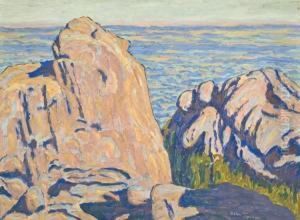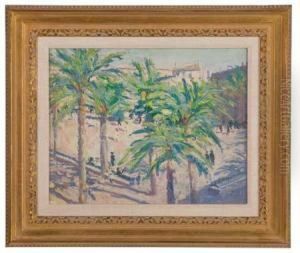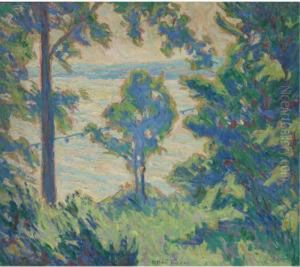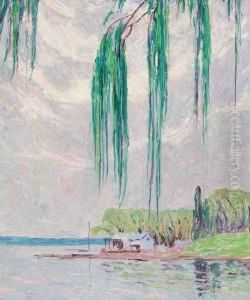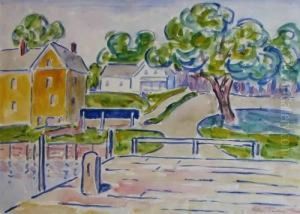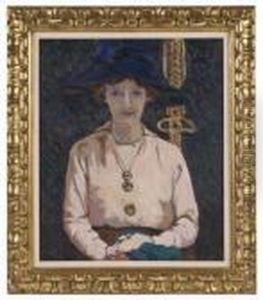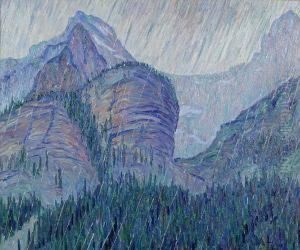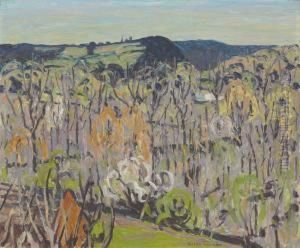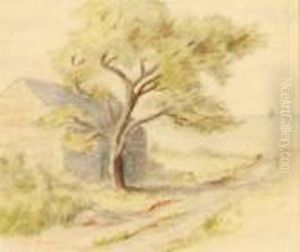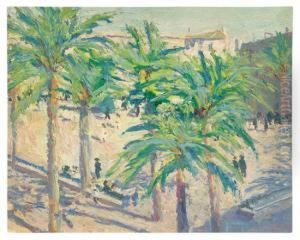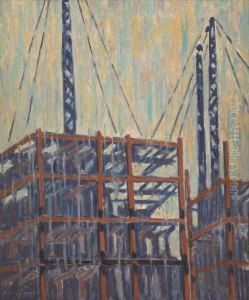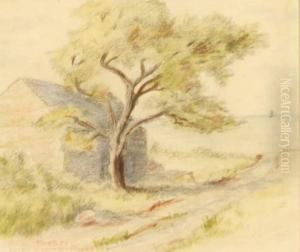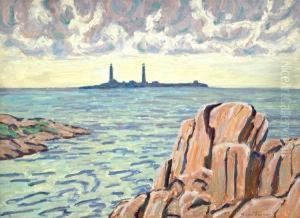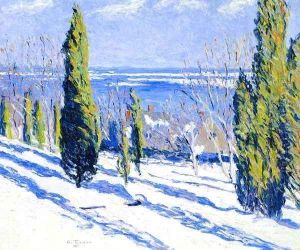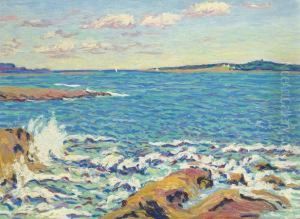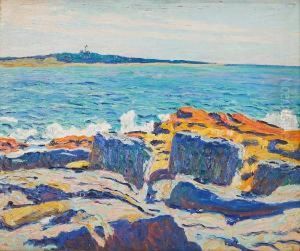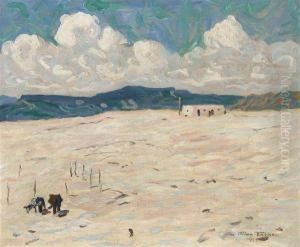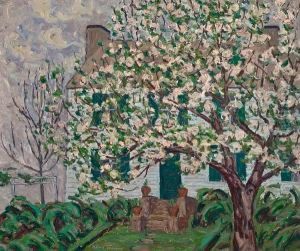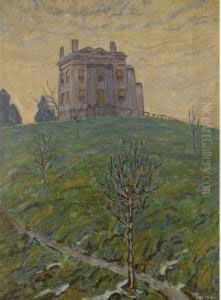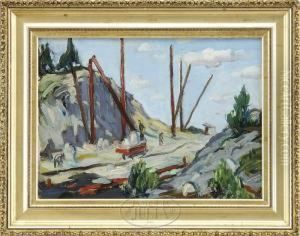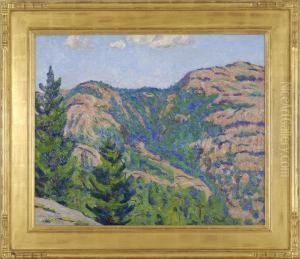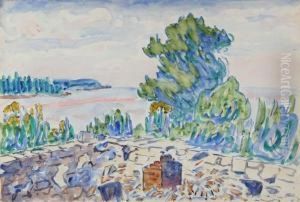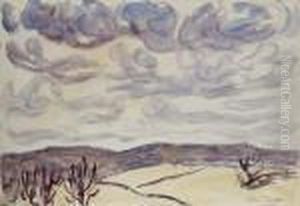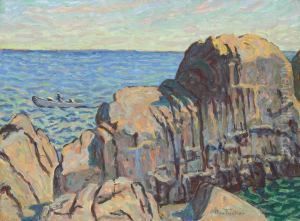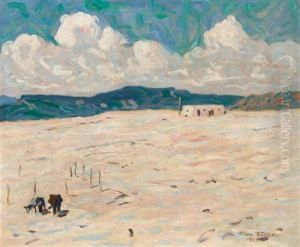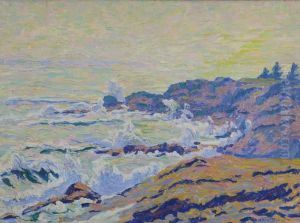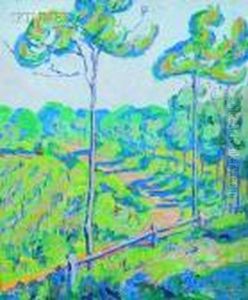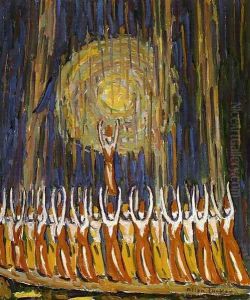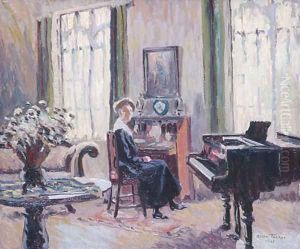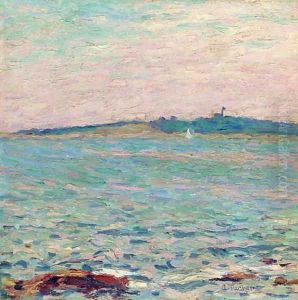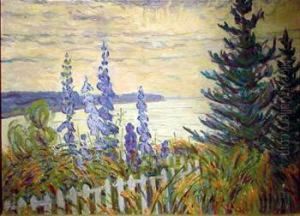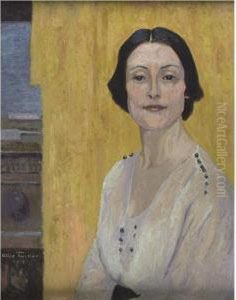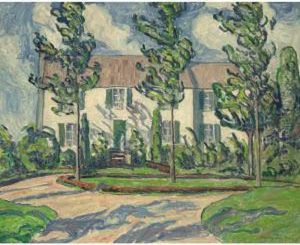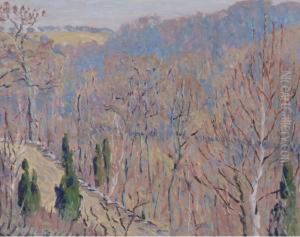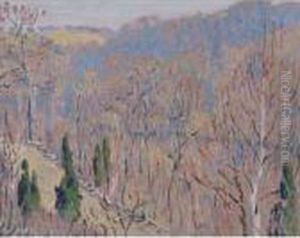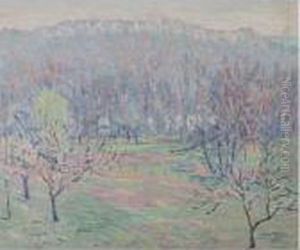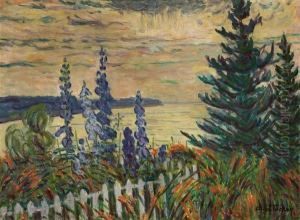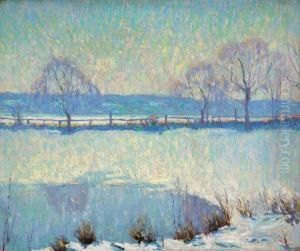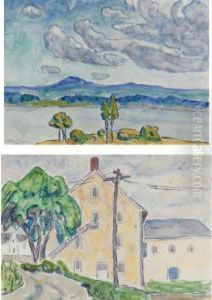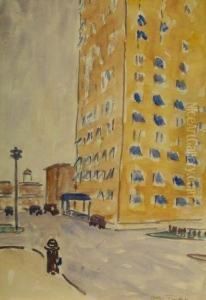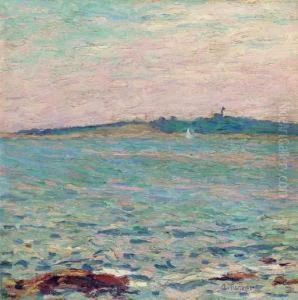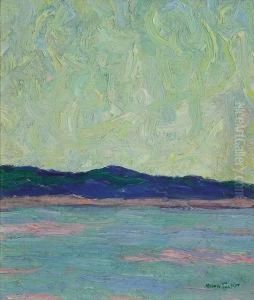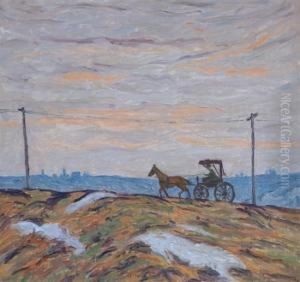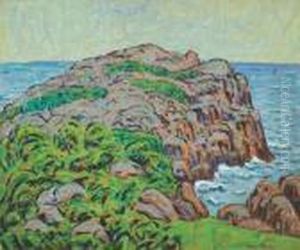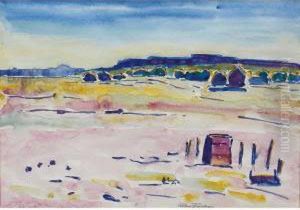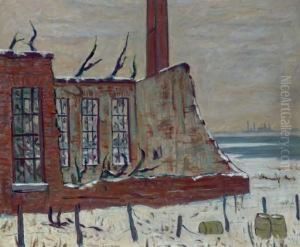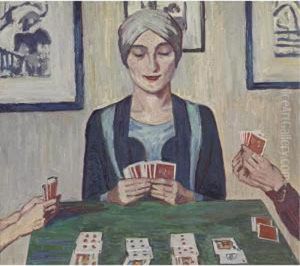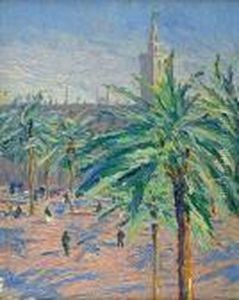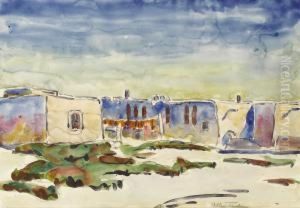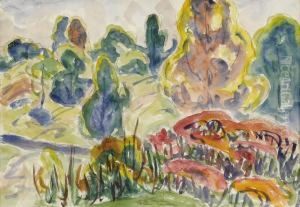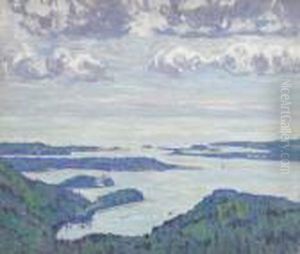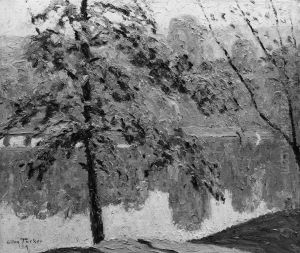Allen Tucker Paintings
Allen Tucker was an American artist known for his work as a painter, particularly within the Impressionist movement. Born on August 5, 1866, in Brooklyn, New York, Tucker found his artistic calling later in life compared to many of his contemporaries. He initially pursued a career in architecture after graduating from the School of Mines at Columbia University in 1887. It wasn't until the age of 35 that he began to seriously study painting, taking up classes at the Art Students League in New York City.
Tucker quickly developed a passion for the Impressionist style, which was gaining popularity in America after its inception in France. He was particularly influenced by the works of Vincent van Gogh and Paul Cézanne, and his style reflected a blend of Impressionist and Post-Impressionist techniques. Tucker's paintings often featured vibrant colors and dynamic brushstrokes, capturing the essence of the American landscape and city scenes with a unique sensitivity.
In 1915, Allen Tucker co-founded the Society of Independent Artists along with other notable figures such as John Sloan and Walter Arensberg. The society was established to provide a venue for artists to exhibit their work without the restrictions of juries or prizes, embodying the democratic spirit that was a hallmark of the American avant-garde movement at the time.
Throughout his career, Tucker exhibited his work widely. He was featured in numerous exhibitions, including the Armory Show of 1913, which was a pivotal event in the introduction of modern art to the American public. Despite his active engagement with the art community and his contributions to American Impressionism, Tucker never gained the same level of fame as some of his contemporaries.
Tucker’s dedication to art extended beyond his painting. He was also an advocate for the arts and took on roles as a lecturer and critic. He wrote articles promoting modern art and often spoke out against the conservative art establishment.
Allen Tucker's work is represented in several major collections, including the Metropolitan Museum of Art and the Smithsonian American Art Museum. Despite the relative obscurity he faced during his lifetime, his work has been reassessed and is now recognized for its contribution to American modernism.
Tucker's art evolved throughout his life, reflecting his continuous exploration and response to the changing art world around him. He remained active in the art scene until his death on October 4, 1939. Today, Allen Tucker is remembered for his vibrant and emotive paintings that capture the spirit of American Impressionism and for his efforts to support the independence and innovation of artists during a transformative period in the history of American art.
